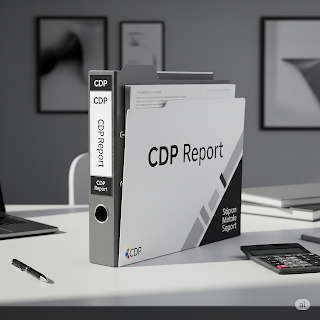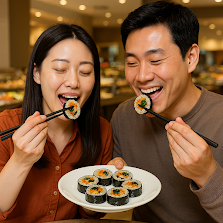🍞🥖🍝 Delicious bread, chewy noodles, crispy cookies...
Wheat is an essential part of our table! However, for some, it is like a pie in the sky.
It is because of wheat gluten.
Wheat gluten, one of the allergens, causes various discomforts for certain people.
In this post, we will take a closer look at the risks of wheat gluten as an allergen, and discuss in detail when a gluten-free diet is necessary and how to consume gluten wisely.
The journey to enjoy delicious food healthily begins now!
1. Gluten, what on earth is it? (The true nature of gluten)
Many people suffer from wheat allergies or gluten intolerance.
So what is gluten, which is at the center of the problem?
Gluten is a type of protein that exists naturally in grains such as wheat, barley, and rye.
In particular, it plays an important role in adding stickiness and elasticity to flour when kneading it, making bread rise and making the noodles chewy.
However, gluten is not simply found in wheat flour foods.
It can also be hidden in some fermented sauces such as beer (containing barley), soy sauce, and soybean paste, as well as processed foods such as snacks or cereals with added wheat flour.
Keyword: #What is gluten #Wheat allergy #Gluten intolerance #Wheat protein #Barley gluten #Rye gluten #Bread making principles #Processed food gluten
2. Why does gluten cause allergic reactions? (Gluten allergy mechanism)
Our body's immune system protects us from harmful substances that invade from the outside.
However, in some people, this immune system mistakenly recognizes harmless gluten as a 'foreign substance' and overreacts.
During this hypersensitivity reaction, various chemical substances are secreted, and this is what causes the various symptoms of gluten allergy.
Gluten itself can work with various other allergens to worsen symptoms, but it is important to remember that the main cause is gluten protein.
Keyword: #Causes of gluten allergy #Immune system abnormalities #Hypersensitivity #Allergens #Gluten and immune reactions
3. Various faces of gluten allergy: Main symptoms (Gluten allergy symptoms)
Gluten allergy can manifest itself in various symptoms depending on the individual.
The main symptoms are as follows:
- Digestive symptoms:
Frequent abdominal pain, diarrhea, and in severe cases, vomiting or constipation may occur.
- Skin symptoms:
Accompanied by hives and severe itching, and may also worsen existing atopic dermatitis.
- Respiratory symptoms:
Nasal congestion, sneezing, and coughing become frequent, and in severe cases, asthma attacks may occur.
Differences with celiac disease: Celiac disease, often confused with gluten allergy, is a genetic autoimmune disease against gluten.
When gluten is consumed, severe inflammation occurs in the small intestine, causing nutrient absorption disorders, and the causes and symptoms are different from allergies.
Keyword: #Gluten allergy symptoms #Abdominal pain #Diarrhea #Hives #Itching #Congested nose #Sneezing #Asthma #Celiac disease #Gluten intolerance symptoms
4. Who needs a gluten-free diet? (Target for gluten-free diet)
Not everyone needs to follow a gluten-free diet.
A gluten-free diet may be necessary in the following cases:
- Celiac disease diagnosis:
If you have been genetically diagnosed with celiac disease, you must maintain a gluten-free diet because gluten exposure causes serious damage to the small intestine.
- Gluten allergy (gluten intolerance):
If you experience clear allergic symptoms after consuming gluten, a gluten-free diet is necessary to alleviate the symptoms.
- Health management purpose:
Recently, the number of people who voluntarily choose a gluten-free diet for health management for reasons such as improving indigestion, relieving skin troubles, and feeling lighter is increasing.
Keywords: #Gluten-free diet #Celiac disease diet #Gluten allergy diet #Gluten intolerance diet #Health management diet
5. Gluten-free diet, be careful of this! (Gluten-free diet precautions)
There are a few things to be careful of before starting a gluten-free diet.
- Check the label carefully:
Processed foods may contain gluten-containing grains such as wheat, barley, and rye in various forms than you might think.
It is important to carefully check the 'Gluten-Free' label.
- Preventing cross-contamination:
If you cook or store gluten-containing foods and gluten-free foods together, gluten may mix.
Be careful of cross-contamination by thoroughly separating knives, cutting boards, and cooking utensils, and using sealed containers when storing.
- Concerns about nutritional imbalance:
A gluten-free diet can lead to nutritional imbalances because it restricts certain grains.
It is recommended to consult a professional nutritionist to create a balanced diet and consider taking nutritional supplements if necessary.
Key words: #Gluten-free precautions #Check food labels #Prevent cross-contamination #Nutritional imbalance #Nutritionist consultation
6. Enjoy the gluten-free world deliciously! (Types of gluten-free foods)
You don't have to give up delicious food even if you start a gluten-free diet!
There are various gluten-free foods around us.
- Natural healthy foods:
You can safely consume natural foods such as meat, fish, various fresh fruits and vegetables, gluten-free beans, and healthy nuts.
- Gluten-free grains:
Various grains such as rice, corn, quinoa, amaranth, buckwheat, tapioca, and millet help you create a delicious diet without gluten.
In particular, oats are naturally gluten-free, but they can be contaminated during the growing and processing process, so it is safe to choose products that are certified as 'gluten-free'.
- Smart gluten-free processed foods:
Recently, various processed foods such as gluten-free bread, pasta, and cereals that have been made by removing gluten have been released. Be sure to check the 'gluten-free' label and choose them.
- Dairy products:
Generally, dairy products such as milk, cheese, and yogurt are gluten-free foods. However, processed dairy products with flavors or additives may contain gluten, so you need to check the ingredients. Keyword: #Gluten-free food #Natural food #Gluten-free grains #Rice #Corn #Quinoa #Buckwheat #Gluten-free processed food #Gluten-free bread #Gluten-free pasta #Dairy gluten
Wheat gluten may be uncomfortable for some, but if you know the right information and deal with it wisely, you can maintain a healthy and delicious diet.
I hope this post will help you understand wheat gluten and choose a diet that suits you. 😊







.jfif)





.jfif)
.jfif)








.jfif)








